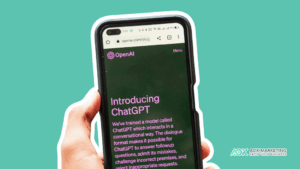Google Ads can be a powerful tool if used correctly– but how is it quietly draining your ad budget?
I’ve seen it happen too often. Businesses invest hours designing a high-converting landing page. They finally launch their Google Ads campaign, watch the traffic roll in—and then, silence. No conversions. No calls. No sales.
Here’s the truth: it’s not about how much money you throw at Google Ads. It’s about how you set up, track, and optimize your campaign. That’s where the difference lies between wasted spend and real ROI.
Let me walk you through the framework I’ve used to build companies like AOKMarketing.com, PromotionalProducts.com, and Achievers.com—which was acquired for $110 million. This is exactly how you create campaigns that don’t just get clicks—they drive real, measurable results.
Step 1: Start With Clear Goals
Before you run a single ad, you need to define what success looks like.
Are you building awareness? Trying to grow your email list? Looking to generate leads or drive purchases? Your answer shapes everything—from your messaging to your bidding strategy.
Here’s how that breaks down: – Brand awareness means you’re tracking impressions and total traffic
– Subscriber growth means you’re counting newsletter signups
– Direct sales means you’re measuring completed checkouts or purchases
– Lead generation means you’re monitoring form submissions or click-to-call activity
Without a clearly defined goal, you’re flying blind. The clearer your objective, the easier it becomes to optimize every piece of your campaign around it.
Step 2: Implement Accurate Tracking
This one’s non-negotiable.
A few days ago, I reviewed an ad account for a therapist who works with teens in Orange County. She mentioned that while her ads were running, she’d been getting fewer calls. When I checked her Google Ads account, I saw the problem immediately—no conversions were being tracked.
She may have been getting leads, but with no data, there’s no way to see what’s working or how to improve it. That’s a painful place to be.
Here’s what I recommend: – Set up Google Analytics to track what’s happening on your site
– Use Google Tag Manager if you want more precise tracking like form fills or button clicks
– Enable Google Ads Conversion Tracking to directly measure the actions tied to your campaigns
Most website platforms make this easy. WordPress? Use a plugin. Shopify? It’s built in. What matters is making sure you’re tracking the key moments—thank-you page views, form completions, purchases—anything that represents a win for your business.
If you can’t measure it, you can’t improve it.
Step 3: Optimize Your Bidding Strategy
Google Ads works like an auction. Someone searches for a keyword, and advertisers bid to show up. But showing up doesn’t equal winning. The question is: how much should you actually pay for a click or lead?
Let’s do some math.
Imagine you’re a therapist and you know that 1 in 10 leads turns into a paying client. If each client is worth $1,000 to your business, then you can afford to spend up to $100 to get those 10 leads—that’s $10 per lead.
This is where Google’s Target CPA (Cost Per Acquisition) bidding comes in. You tell Google, “Get me conversions at $10 or less,” and it will start optimizing your bids around that goal.
When your numbers work—spend $100, make $1,000—you’ve got yourself a scalable system. A machine that prints money.
But that only happens when your bidding strategy is based on real data and real value.
Step 4: Build Consistency and Trust
Getting traffic is one thing. Getting people to take action? That’s about trust.
When someone clicks your ad, they’re making a split-second judgment. Does this page look legit? Do I feel confident giving this company my information or money?
You need to deliver consistency across the board: – Match the messaging in your ad to your landing page
– Make sure your site is mobile-friendly and fast
– Highlight social proof—think testimonials, reviews, or press mentions
– Keep your branding clean, cohesive, and professional
If your landing page looks like it was built in 2009 or doesn’t clearly communicate your value, you’ll lose people. Build trust. Keep it simple. Show people they’re in good hands.
Step 5: Feed Google the Right Data
Google is powerful—but it needs direction.
Its machine learning system will optimize based on what you tell it matters. So if your conversion tracking isn’t set up properly, Google doesn’t know what a “good” action is. That means it can’t optimize your campaign for the outcomes you care about.
If you’re serious about scaling, this part is key: – Audit your conversion tracking regularly
– Double-check that your goals in Analytics match what you’re optimizing for
– Align your Google Ads conversions with actual business value—not just clicks
When you give Google clean, accurate data, it can do what it does best—optimize and scale. Without that, you’re throwing money into a black hole.
Final Thoughts
Google Ads isn’t just about visibility. It’s about building a system that turns strangers into buyers—and buyers into long-term customers.
Here’s a quick recap: – Set crystal-clear campaign goals
– Track your most important actions using Google’s free tools
– Build a bidding strategy based on what you can afford to pay per lead
– Keep your landing page experience trustworthy, fast, and consistent
– Let Google learn from the right data so it can work for you—not against you
Once you have these five elements working together, your campaigns won’t just get attention—they’ll deliver predictable, scalable growth.
This isn’t guesswork. It’s a system. And it works.
About The Author
Dave Burnett
I help people make more money online.
Over the years I’ve had lots of fun working with thousands of brands and helping them distribute millions of promotional products and implement multinational rewards and incentive programs.
Now I’m helping great marketers turn their products and services into sustainable online businesses.
How can I help you?





